These are the fire pit safety tips you need to know before lighting yours
There are some important fire pit safety tips to consider before you gather round for a cozy evening outdoors
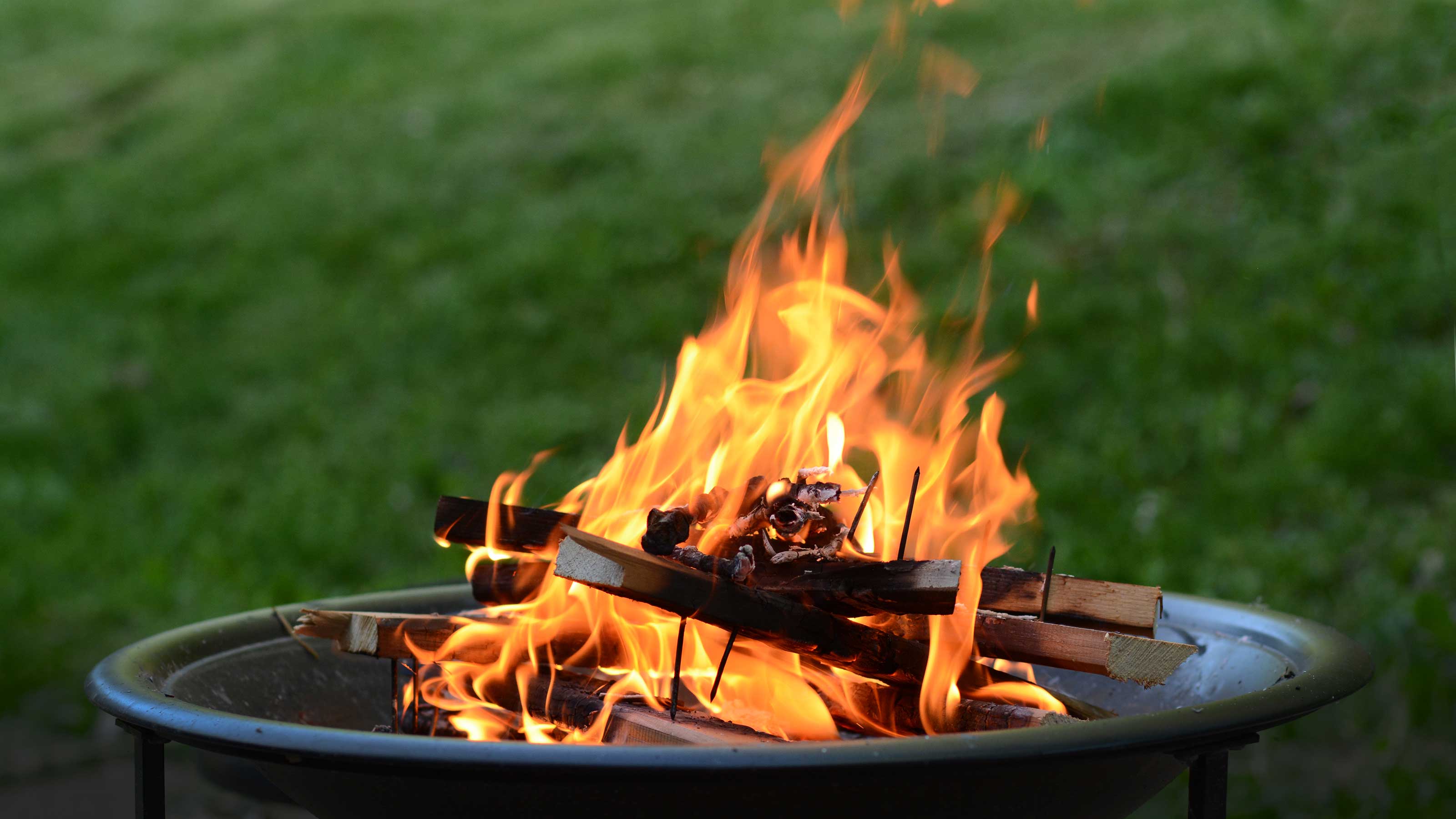

It's important to find out about fire pit safety tips before lighting yours to ensure everyone can enjoy the warmth and ambiance without worry.
As you'll know if you've already perused our fire pit ideas, these features are always the centerpiece of any outdoor gathering or garden party. But, any fire will come with safety issues you need to be aware of, especially if you have quite a few guests coming, or there are likely to be pets or children around. So before you grab the matches, it's crucial to brush up on the safety factors to reduce any risk of danger.
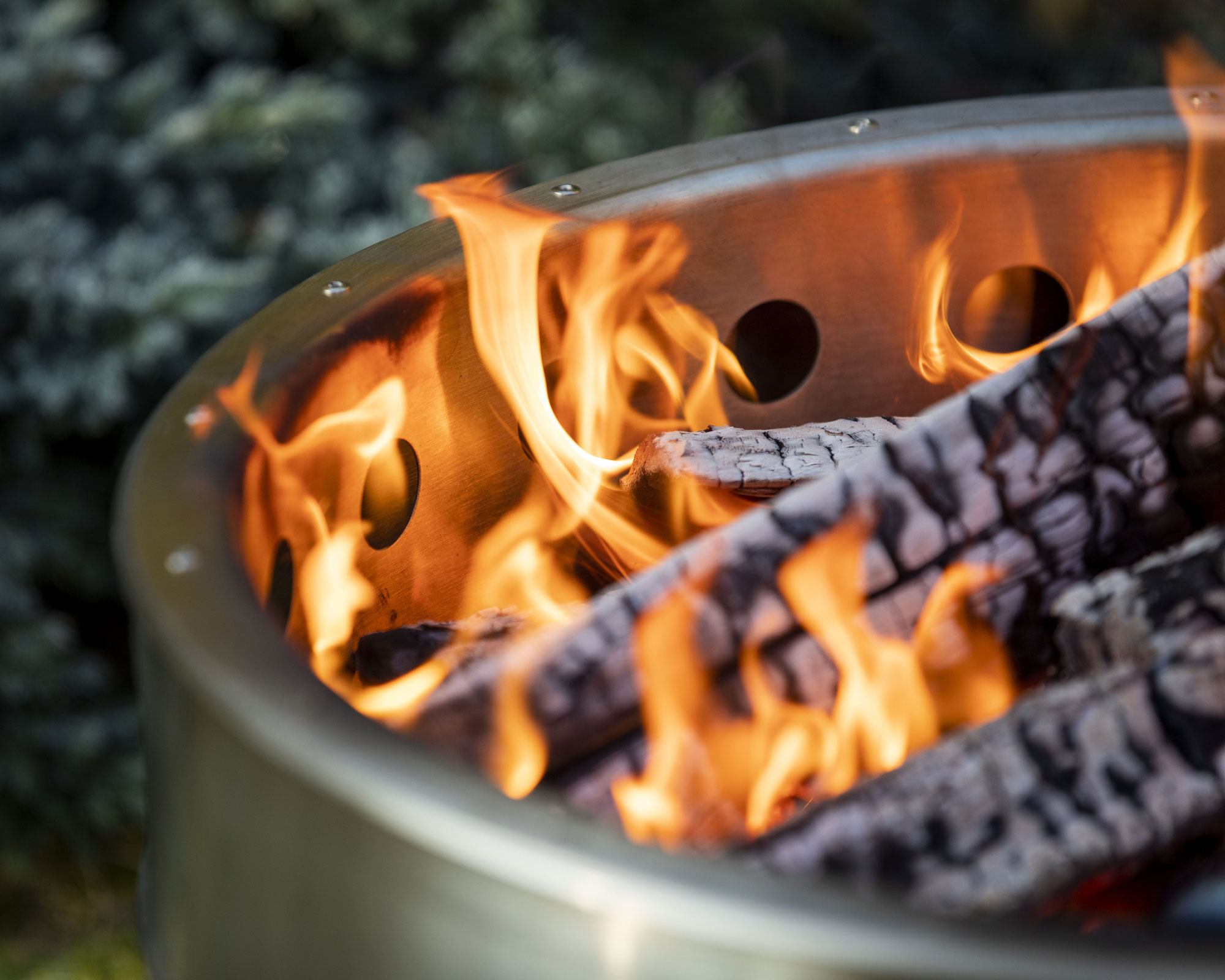
Fire pits, such as this design from Feuerhand, create a relaxing glow, but must be used safely
9 quick fire pit safety tips to guide you
Whether you're new to them or an old hand, it's a good idea to read our top fire pit safety tips to make sure you're at the top of your game.
You'll also need them if you're interested in how to build a fire pit yourself.
- 'Never leave a fire pit unattended,' says Louise Wright of fire pit makers The Woodee. 'This goes for hot embers, too. They can easily reignite or get blown onto flammable surfaces such as dry grass or wooden structures.'
- 'The safest fire is the one that's well planned,' says Louise. 'If you're lighting your fire pit on a hot day – maybe you’re experimenting with how to cook on a fire pit – think about first dousing the ground underneath with water to make sure no ash or sparks drop out and ignite dry grass.'
- Always check the weather. 'Wind is an absolute no-go when it comes to fire pits,' says PriceYourJob's outdoor expert Harry Bodell. 'Together, wind and fire spell danger. Check the weather forecast for strong winds before using a fire pit to avoid this.'
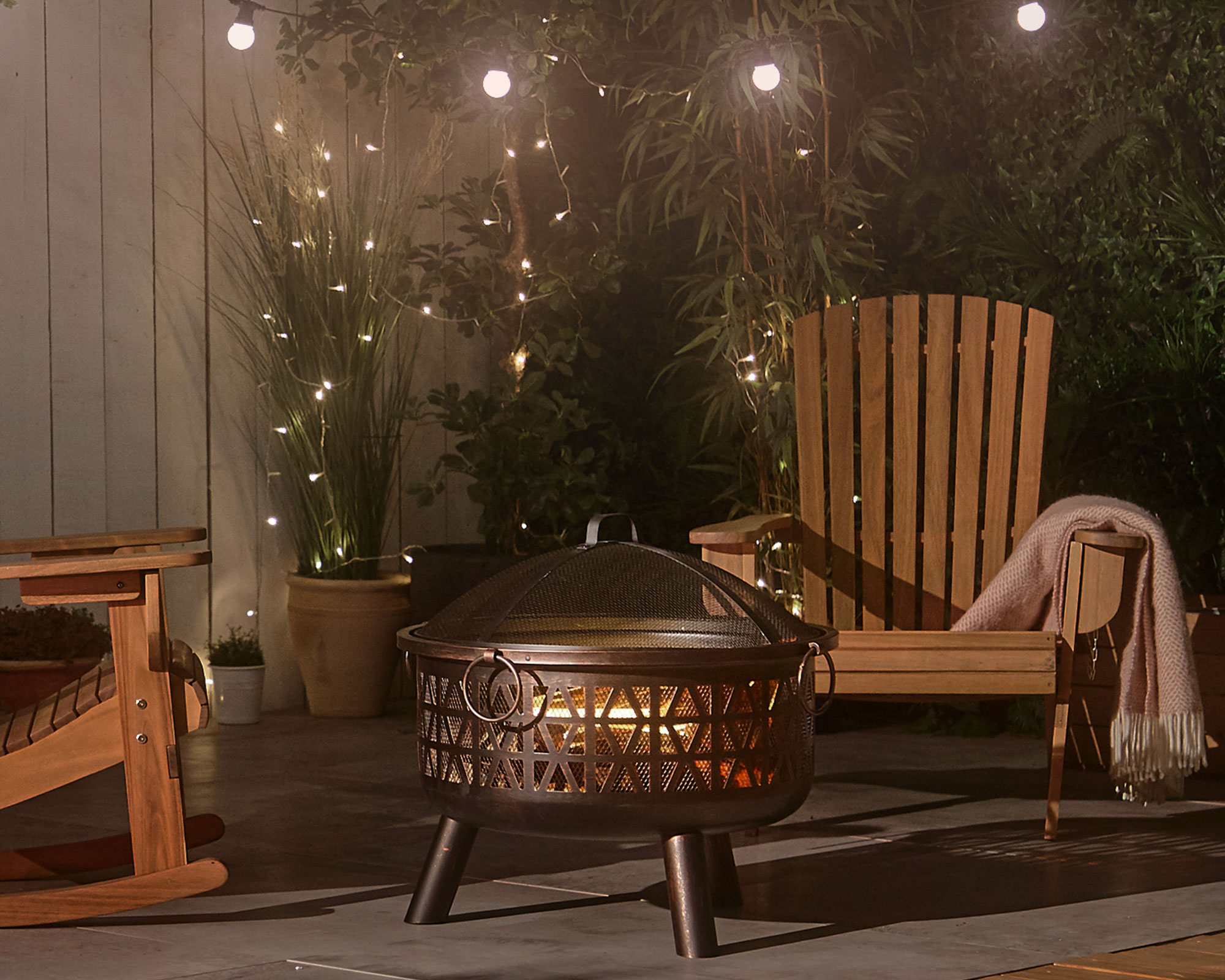
Choose a sturdy, non-flammable base for your fire pit, as seen in this setup from Von Haus
- When choosing a place for your fire pit, make sure you position it at a reasonable distance from any surrounding structures. 'If you’re setting up in your backyard, keep your fire at least 10 feet away from your home,' says Harry. 'The further away you are, the safer you'll be.'
- Also, make sure the surface below your fire pit is stable. Setting up a fire pit on uneven terrain is never a good idea. Choose a flat area of your garden such as the patio. Our fire pit patio ideas have lots of looks to inspire you.
- Spark screens or lids are a great way to stop sparks from escaping and landing in the area around your fire pit. 'They are also a form of protection if you have guests or pets that wander a little too close to the fire,' says Harry. Spark screens come in a range of different sizes, catering to most types of fire pits.
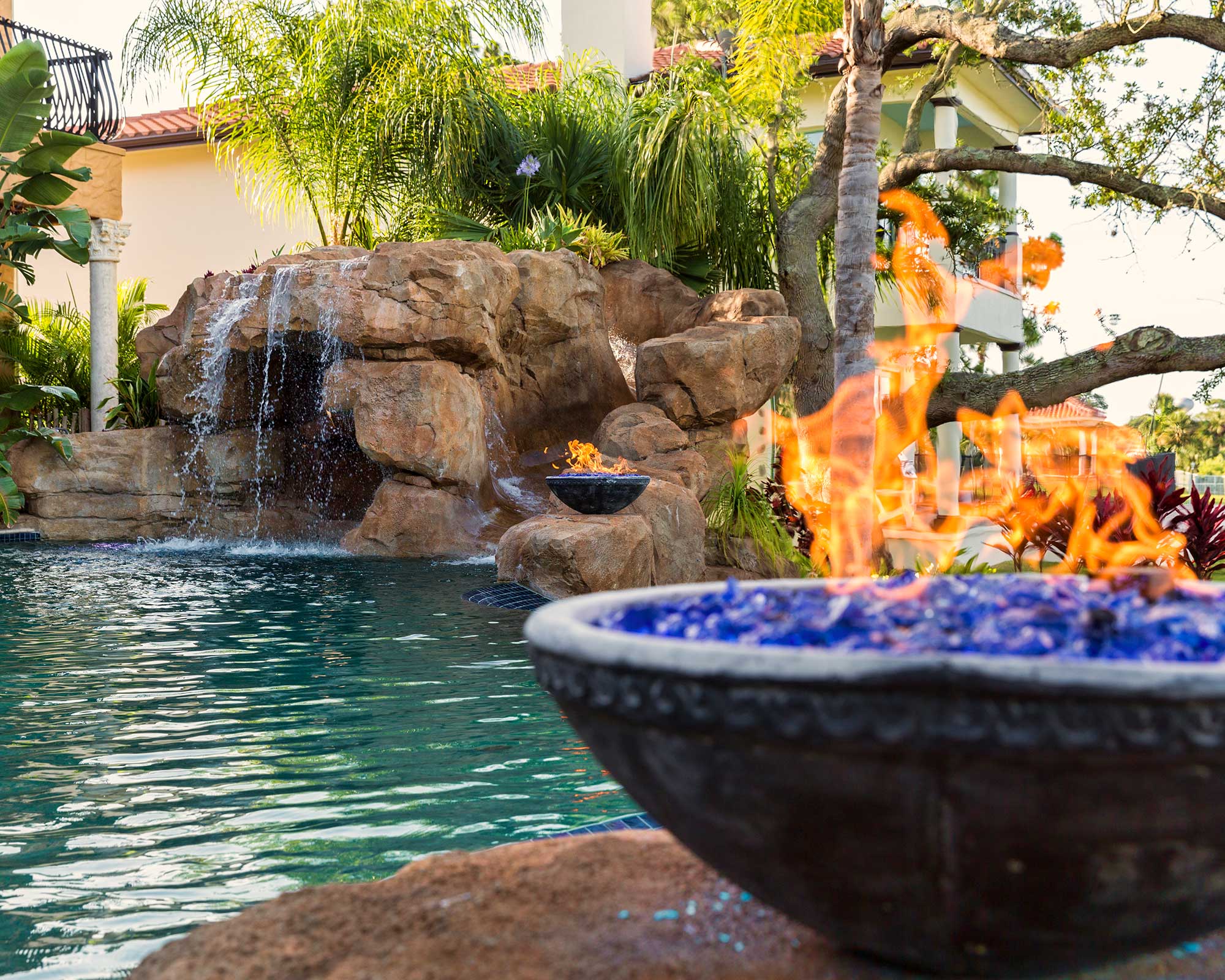
Make sure your fire pit is placed away from anything flammable
- 'Safety must be taken into account where gas fire pits are concerned,' says Declan Kingsley-Walsh, MD at Morsø UK. 'Make sure you have the correct regulator for the type of gas you're using. When not in use, you should store gas cylinders in a safe place. Do a gas leak test before first use and every time that the gas cylinder is refilled and reconnected to the fire pit.'
- Think about how long you want your fire pit to be lit. 'This will help you plan when to stop adding fresh fuel to it,' says Louise. 'Depending on the fire and the size of the logs, this would be a minimum of 30 minutes from the end, but it's best to allow an hour.'
- Keep a garden hose handy just in case to douse any flames that get out of control. Never use a bucket of water as this could form a hard crust on wood and ash that can continue burning underneath as the fire won't have been put out completely.
Is it OK to leave a fire in a fire pit?
'Fire pits provide a beautiful ambiance to your outside space but it’s important not to leave them unattended,' says fire pit designer David Harber. 'A tiny gust of wind can quickly spread hot ashes or embers over a significant distance. Even without a flame, hot embers can ignite nearby flammable materials.'
'It's never okay to leave a burning fire pit unattended or abandoned. In fact, in a lot of countries it’s actually illegal,' says Harry Bodell. 'Leaving a fire pit unattended can cause disaster. Wildfires can be started by a rogue hot ember or ash igniting a flammable area such as grass or woodland surrounding the fire.'
Leaving even one of the best fire pits can be extremely hazardous, causing fires in the garden that can spread to surrounding yards and even homes. Make sure your fire pit is fully extinguished at the end of the evening, too, before leaving it.
'Once the flames have fully burnt out, wait around 30 minutes for the ashes to cool further,' says Harry. 'Then carefully cover the area with water, cooling the ashes. If you're using a hose, choose a light spray setting to avoid spreading any hot ashes and embers to the surrounding area.'
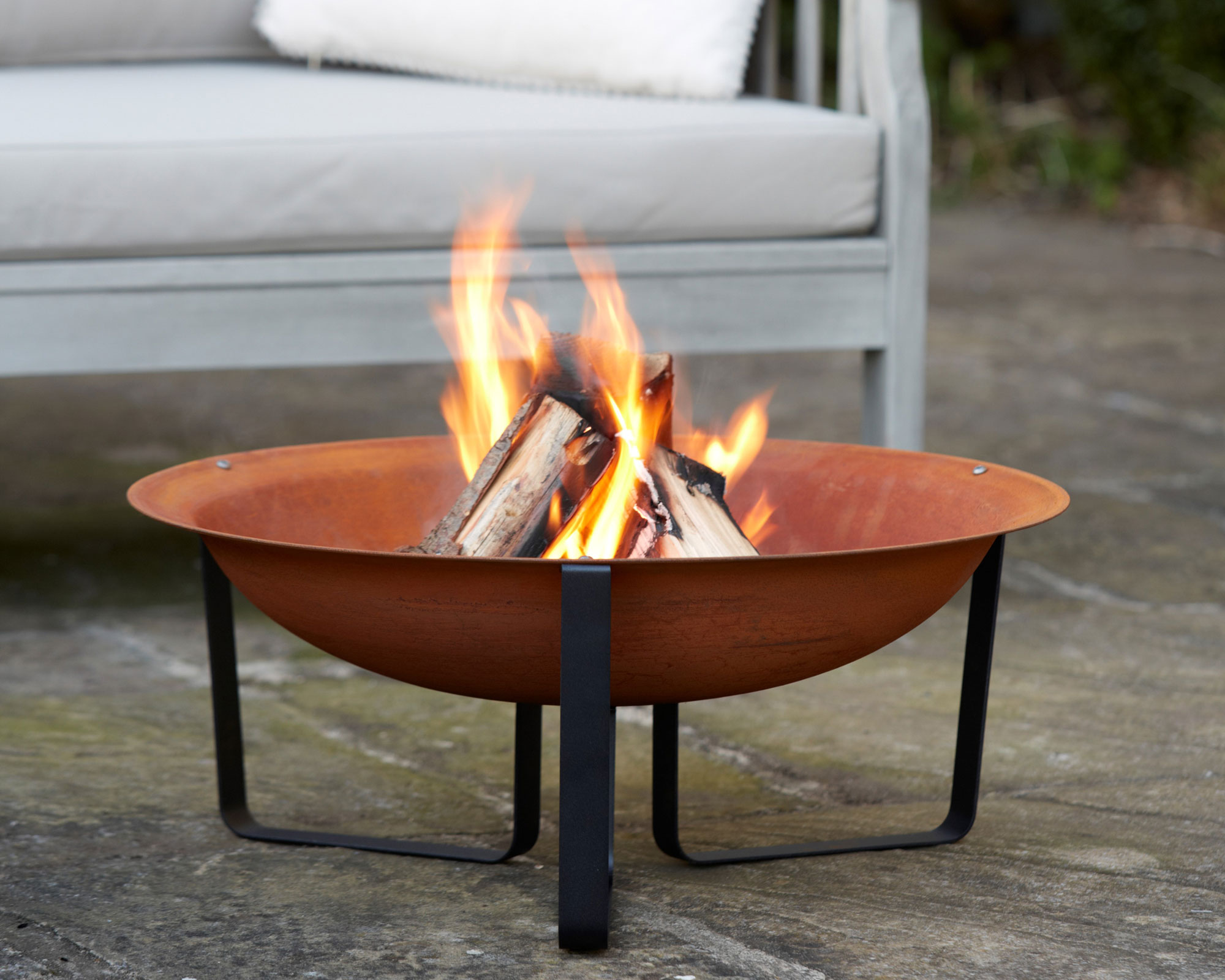
Ensure your fire pit is extinguished before leaving it – this design is from Gardenesque
What should you not put in a fire pit?
When building your own DIY fire pit or lighting a regular one, don't use lighter fluid to get the fire burning. Flammable liquids can cause a fire to become out of control, which can result in injury and the fire spreading.
'The safest materials to burn in a fire pit are natural woods,' says Harry Bodell. 'We recommend natural hardwoods such as oak, beech and ash, as softwoods tend to release an overbearing amount of smoke that can make sitting around the fire an unpleasant experience.'
When it comes to following fire pit safety tips, never burn anything that will release toxic chemicals. 'Materials like plastic or varnished wood release toxic chemical fumes such as dioxins, furans and styrene gas,' explains Harry. 'Once released into the air these gasses pollute the environment and are toxic to breathe in.'
The pages of newspapers and magazines shouldn't be burnt or used to light a fire pit either, as they contain chemicals such as ink and varnish which can become toxic. Also avoid using treated or painted wood.
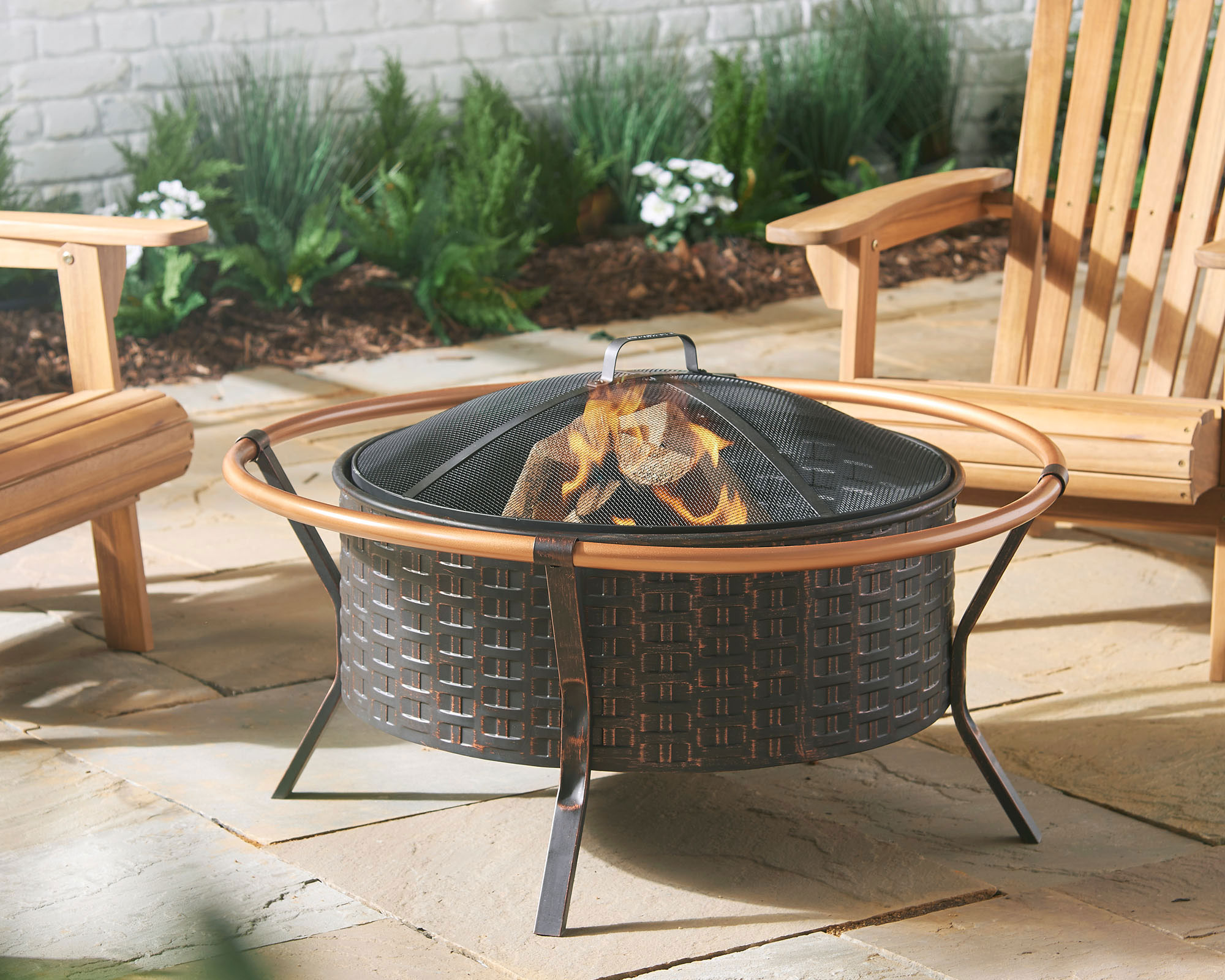
A beautiful fire pit with spark screen from Von Haus
Where is it safe to use a fire pit?
It’s important to consider the location of your fire pit. Positioning it in the wrong place can have serious consequences.
Always place your fire pit away from any buildings, structures and other flammable items. 'Try to keep it at least 20-25 feet away from anything flammable,' says Harry Bodell. This includes plants or overhanging trees, as well as fencing, awnings and electrical wires, all of which can be susceptible to stray sparks.
'It’s also important to consider the type of ground underneath the fire pit. Grass and wood decking should be avoided, as they can easily catch fire if any loose ashes or embers fall onto them,' he adds.
Position your fire pit on a steady surface, such as a stone patio or any other paved area of the garden. It’s also safe to set up a fire pit in an area of firm, flat terrain.
If you really want to set up a deck fire pit, or put one onto grass, consider investing in a heat-shielding mat to protect the surroundings.

Lifestyle journalist Sarah Wilson has been writing about gardens since 2015. She's written for Gardeningetc.com, Livingetc, Homes & Gardens, Easy Gardens and Modern Gardens magazines. Having studied introductory garden and landscape design, she is currently putting the skills learned to good use in her own space where the dream is establishing a cutting garden.
